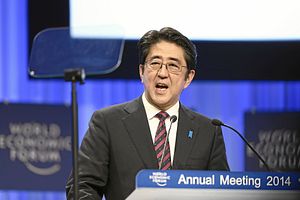Japan has long had a problem with vote-value disparity among its electoral districts, but with this summer’s Upper House elections rapidly approaching, it appears that Prime Minister Shinzo Abe is finally ready to address the issue.
The problem with Japan’s electoral system as it currently exists is that some districts have many more elected representatives per voter than other districts. Vote-value disparities in some instances are 2-to-1 or higher, inviting a potential Supreme Court challenge to the validity of the next Lower House election results. In general, the large number of single-seat electoral districts favors the ruling Liberal Democratic Party (LDP), as multiple opposition parties tend to split the anti-LDP vote. The goal of electoral reform is to correct the vote-value disparity between the most- and least-populated areas.
Abe had vaguely promised electoral reform to then-Prime Minister Yoshihiko Noda of the Democratic Party of Japan (DPJ) back in November 2012. During a question and answer session, Noda indicated a willingness to dissolve the Lower House – which would have advantaged the LDP due to the DPJ’s unpopularity at the time – if the LDP would be willing to enact electoral reform. The resulting snap election swept the LDP back into power after three years of DPJ rule. The opposition party is likely to try to attack Abe for apparently having gone back on his word – though Abe can argue that he never made an explicit promise, and his defenders would also point out that he has cut five seats in the Diet.
Separately, before the November arrangement, Noda had also reached an accord of sorts with Sadakazu Tanigaki, Abe’s predecessor as president of the LDP. If Tanigaki would help the DPJ raise the consumption tax, Noda agreed to dissolve the Lower House in the near future. In addition to raising the consumption tax, the idea was to cut the number of Diet members to save government money. The unpopular consumption tax went into effect but the number of Diet members was never cut as drastically as hoped for, which could cause problems for Abe and the LDP. After all, the citizens have done their part, paying higher taxes, yet the government has failed to cut costs by reducing the number of Diet members the citizens must support.
These concerns have led Abe to ask for the electoral reform plan–originally slated to go into effect after 2020–to be reworked to go into effect sooner. It is important for Abe to speed up the process of electoral reform so it does not appear that he is anti-reform. With an eye on the Upper House elections scheduled for July, Abe is doing everything he can to maintain his party’s popularity – and their seats.
The plan is to cut ten Lower House seats, six of which are single-seat electoral districts and four of which come from the proportional representation lists. Yet, while there is consensus for cutting seats, contention persists over how the remaining seats are to be reallocated.
While the LDP wants to keep the current method of allocating one seat to every prefecture and distributing the remaining seats according to prefectures’ population, Komeito (LDP’s junior coalition partner) and the DPJ want to use the Adams’ method to allocate seats. Using the Adams’ method would actually address vote-value disparity, which keeping the current system would not. Abe does not want to adopt a new seat allocation system because doing so would threaten some LDP members as they get redistricted from “safe zones” to more contested political landscapes. Because Abe’s current plan would merely cut seats, but not overhaul the system, Abe has been accused of defending his parochial party interests at the expense of true reform.

































